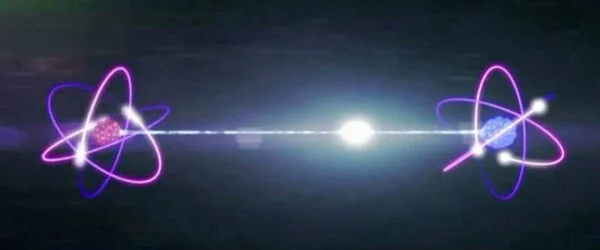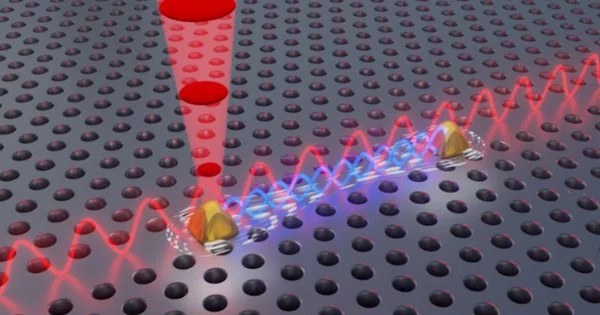Quantum physics deals with the behavior of matter and energy at a very small scale, such as the scale of individual atoms and subatomic particles. Advances in this field can lead to new technologies and a deeper understanding of the nature of the universe.
Researchers from the University of Copenhagen, in collaboration with Ruhr University Bochum, have solved a problem that has plagued quantum researchers for years. Researchers can now control two quantum light sources instead of just one. As insignificant as it may appear to those unfamiliar with quantum mechanics, this monumental breakthrough enables researchers to create a phenomenon known as quantum mechanical entanglement. This, in turn, opens up new opportunities for companies and others to commercialize the technology.
In most cases, going from one to two is a minor accomplishment. However, in the world of quantum physics, this is critical. For years, researchers all over the world have worked to create stable quantum light sources and achieve the phenomenon known as quantum mechanical entanglement – a phenomenon with almost sci-fi-like properties in which two light sources can affect each other instantly and potentially across large geographical distances. Entanglement is the fundamental building block of quantum networks and is critical to the development of an efficient quantum computer.
We are now able to control and connect two quantum light sources. It may not appear to be much, but it is a significant advancement that builds on the previous 20 years of work. We’ve revealed the key to scaling up the technology, which is critical for the most cutting-edge quantum hardware applications.
Professor Peter Lodahl
Today, researchers from the Niels Bohr Institute published a new result in the journal Science demonstrating that they were successful in doing just that. According to Professor Peter Lodahl, one of the researchers behind the result, it is a critical step in the effort to advance quantum technology and “quantize” society’s computers, encryption, and the internet.
“We are now able to control and connect two quantum light sources. It may not appear to be much, but it is a significant advancement that builds on the previous 20 years of work. We’ve revealed the key to scaling up the technology, which is critical for the most cutting-edge quantum hardware applications” Professor Peter Lodahl, who has been researching this topic since 2001, agrees.
The magic takes place in a nanochip, which is about the size of human hair and was developed by the researchers in recent years.

Quantum sources overtake the world’s most powerful computer
Peter Lodahl’s group is experimenting with a type of quantum technology that employs light particles known as photons as micro transporters to move quantum information around.
While Lodahl’s group is a leader in this branch of quantum physics, they have previously only been able to control one light source at a time. This is because light sources are extremely sensitive to outside “noise,” making them extremely difficult to replicate. The research team was able to create two identical quantum light sources rather than just one in their new result.
“Entanglement means that by controlling one light source, you immediately affect the other. This makes it possible to create a whole network of entangled quantum light sources, all of which interact with one another, and which you can get to perform quantum bit operations in the same way as bits in a regular computer, only much more powerfully,” explains postdoc Alexey Tiranov, the article’s lead author.
This is because a quantum bit can be both a 1 and a 0, resulting in processing power that is unattainable with current computer technology. Professor Lodahl claims that 100 photons emitted by a single quantum light source contain more information than the world’s largest supercomputer can handle.
There is the potential to build a universal error-corrected quantum computer using 20-30 entangled quantum light sources – the ultimate “holy grail” for quantum technology that large IT companies are now pouring billions into.
Other actors will build upon the research
According to Lodahl, the biggest challenge has been to go from controlling one to two quantum light sources. Among other things, this has made it necessary for researchers to develop extremely quiet nanochips and have precise control over each light source.
The fundamental quantum physics research is now in place, thanks to the new research breakthrough. It is now up to other actors to take the researchers’ work and apply it to their efforts to implement quantum physics in a variety of technologies such as computers, the internet, and encryption.
“A university cannot afford to build a setup in which we control 15-20 quantum light sources. So, now that we’ve contributed to understanding fundamental quantum physics and taken the first step, scaling up further is primarily a technological challenge” Professor Lodahl says.
















